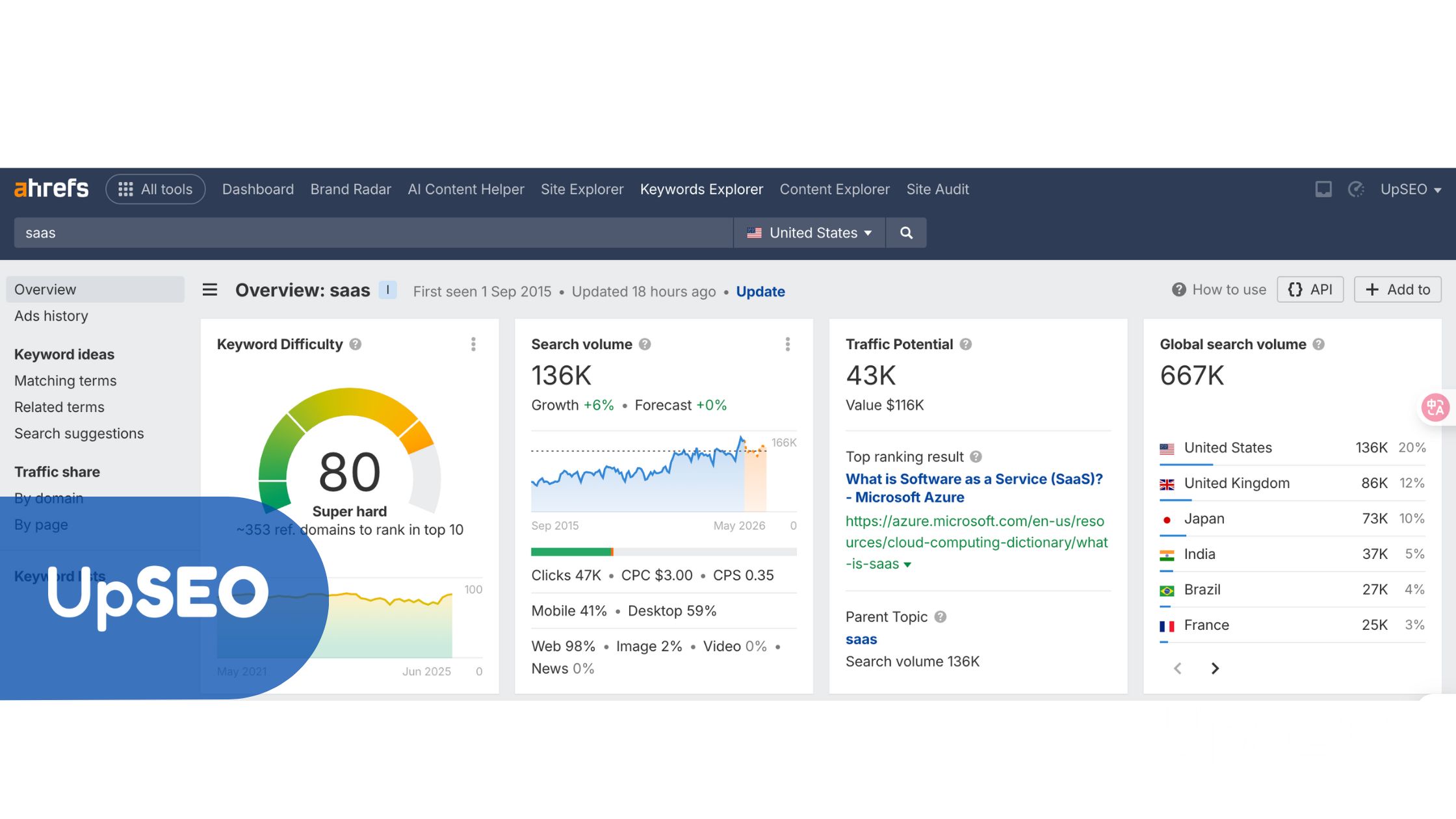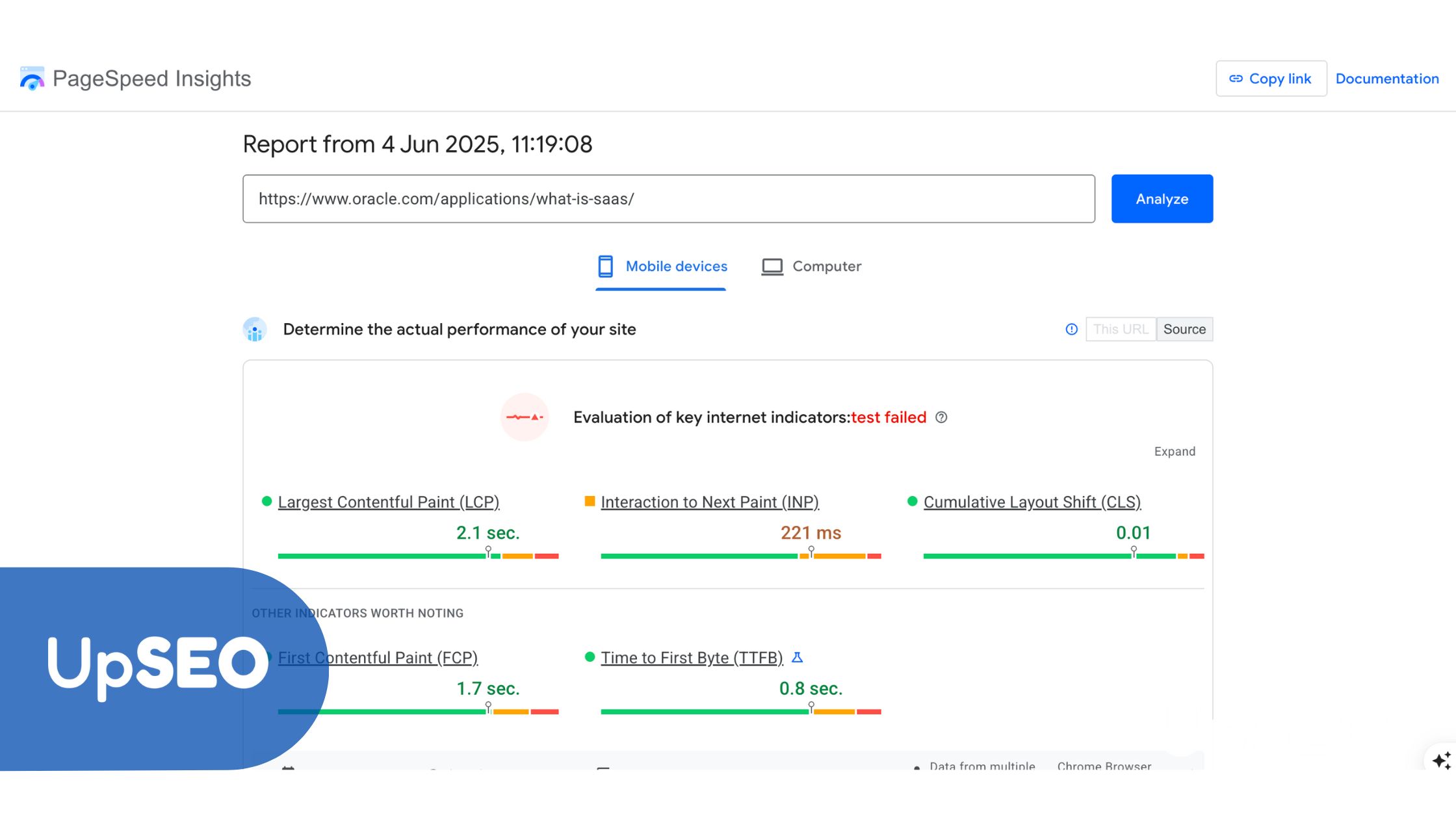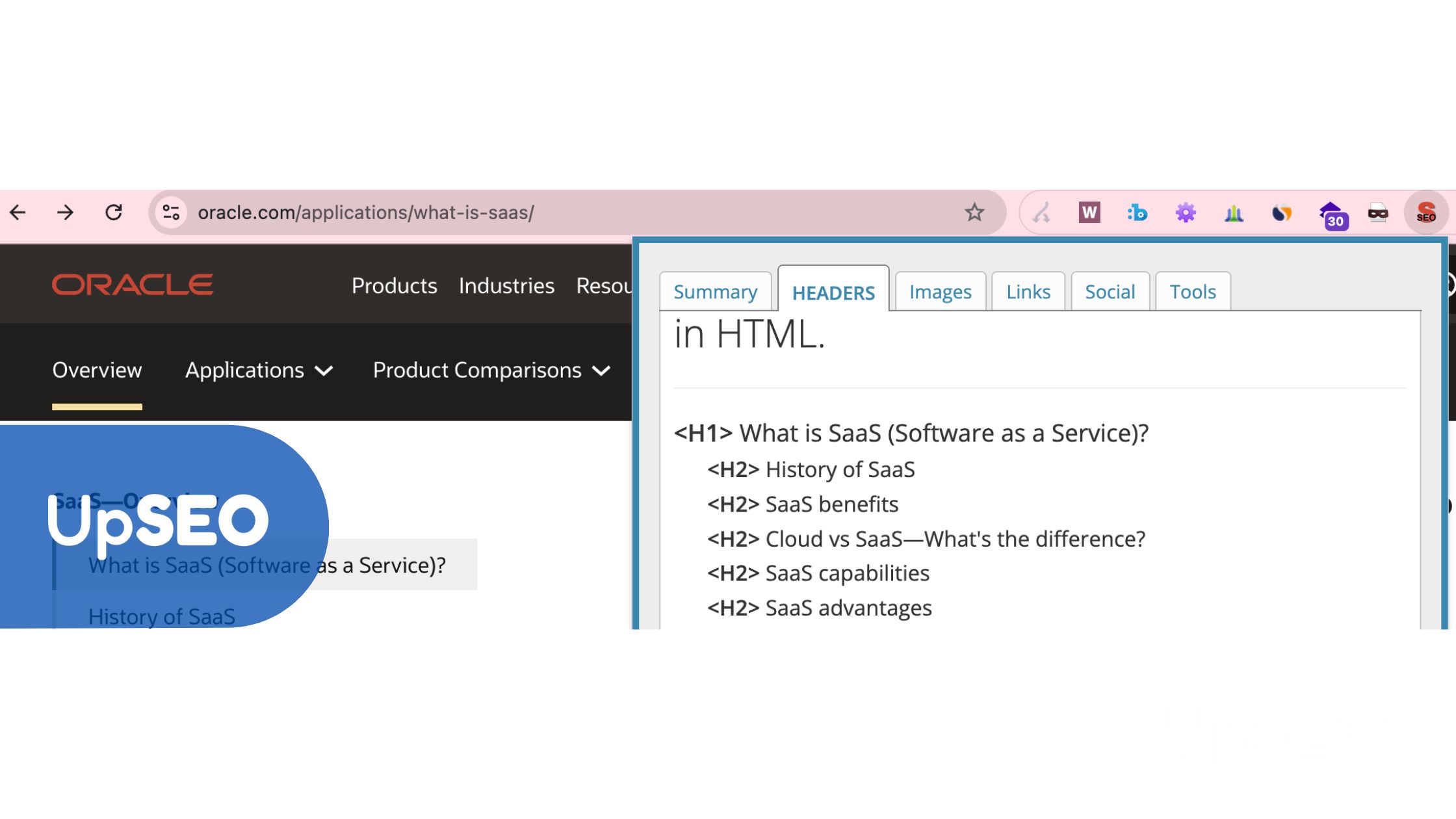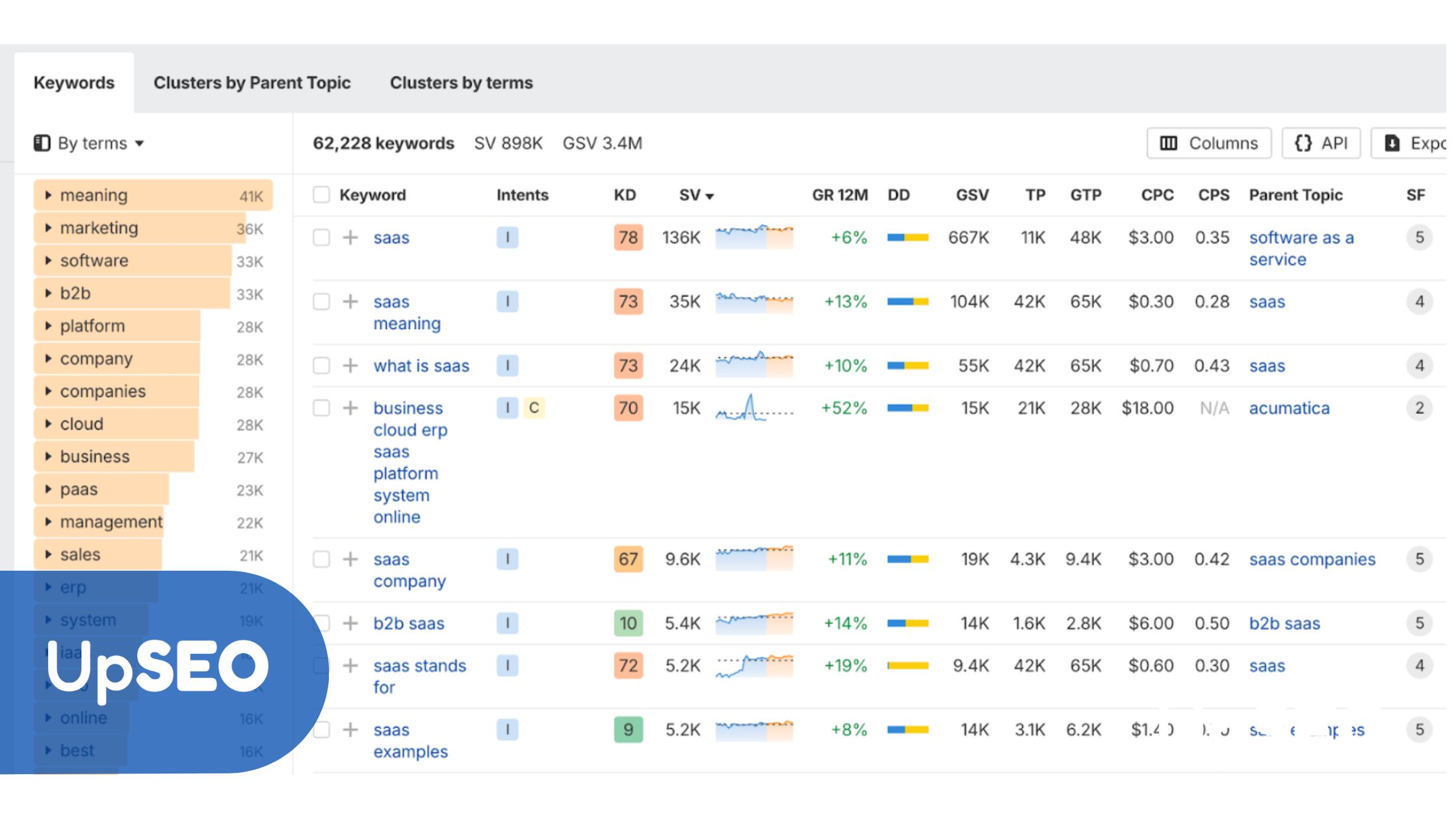Want to get the hang of all that it takes for the top-ranking SaaS pages to be where they are in your audience’s SERP (Search Engine Results Page)? Start implementing and mastering the SaaS-specific SEO strategies and see your rankings go up!
Think of it: you have good SaaS offerings and by that we mean the technical aspects are all top-notch, the pricing is well-balanced and your offerings address the issues to the T. But how do you tell that to your audience or potential customers? How do you convince them that your SaaS offerings are the best and capture their attention? Especially when there is a wide variety of similar SaaS companies and offerings out there that might just appear first every time your audience searches for a specific digital solution.
The answer is leveling up your SEO (Search Engine Optimization) game and there’s nothing esoteric about it. Because let’s face it, in the current SaaS market worth 247 billion US dollars which is growing at an impressive CAGR of 18.4%, SEO is no longer just a nice-to-have. It has become essential if you want to stand out in the booming market with some 30 to 40 thousand SaaS companies at your audience’s disposal.
It’s not just great for landing on the first page of search engine results but experiencing overall growth of your business as well, because a well-executed SEO strategy can give your visibility and rankings a boost and increase conversion rates too. Research shows that 70% of marketers find SEO so much more effective than the Pay-Per-Click (PPC) model for driving sales.

However, as a SaaS business, with the need for constant user engagement and long sales cycles, it’s easy to feel overwhelmed with SaaS SEO. That’s where having a comprehensive SaaS SEO checklist tailored to your industry’s unique needs comes in handy. If you are looking for your ultimate SaaS SEO checklist, this is the page for it. Read along as we tackle different aspects one by one:
- Search Engine Optimization for SaaS Homepages
- SaaS Products or Features SEO Optimization Checklist
- SaaS Pricing Page SEO Best Practices
- SaaS Trial and Onboarding Page SEO Checklist
- SEO Strategies for SaaS Blog and Resource Page
- SaaS Support and Helpdesk Page SEO Tactics
- SaaS API and Developer Documentation SEO Checklist
- Global SEO Enhancements for SaaS Websites
- Final Words – Level Up Your SaaS SEO Strategy!
Search Engine Optimization for SaaS Homepages
- Show a Clear Value Proposition
Go all out in making your SaaS offerings stand out by clearly putting out your value proposition including what makes your offerings or SaaS solutions unique and what benefits users can get from them. - Use Schema Markup
Show your brand details and contact information with the organization and website schema. This structured data will help the search engines understand your business and boost your visibility. - Optimize Your Title Tags and Meta Descriptions
Your meta descriptions become part of the snippet that search engines highlight so optimize them by incorporating relevant high-performing keywords in them as well as title tags. This will improve your click-through rates from search engine results pages as research shows pages with optimized meta descriptions have around 6% more click rates. - Prioritize Mobile-Friendly Navigation
Design your homepage keeping mobile-friendliness in mind so it can seamlessly work and provide a smooth user experience whether your customers access it via desktop or mobile devices. - Enhance Your Page Load Speed
Slow-loading pages can increase bounce rates so work on improving how fast your homepage loads. Use Google PageSpeed Insights to recognize correct issues that might be slowing down your loading times. - Include Bold and Clear CTA
Add testimonials, user reviews, or the logos of brands who use your SaaS offerings to build trust and credibility with your potential customers. - Build your SaaS Credibility
Add testimonials, user reviews, or the logos of brands who use your SaaS offerings to build trust and credibility with your potential customers. - Do Internal Linking
Direct or redirect your website visitors to specific features or SaaS offerings by strategically using internal linking. For example in CTA, you can add links to specific offerings or a direct push button linked to subscribing forms, etc. - Prepare Header Tags for Search Engine
Optimize your header tags like H1, and H2 tags for search engines too by using targeted keywords in them. - Select high-quality images
Select high-quality images to go up on your SaaS homepage but select their resolution and size such that they load fast and include alter tags with keywords to enhance their search engine visibility and accessibility.
SaaS Products or Features SEO Optimization Checklist
SaaS Pricing Page SEO Best Practices
- Clearly display pricing options
Make pricing transparent and easy to understand for potential customers. - Include relevant keywords
Use terms related to cost or affordability in descriptions to improve search visibility. - Utilize structured data for offers
Implement structured data markup to help search engines understand pricing information better. - Improve page speed
Optimize loading times as slow pages can deter potential customers. - Use compelling CTAs
Encourage conversions through persuasive CTAs that lead users toward making a purchase or signing up. - Highlight value per price tier
Clearly communicate what users receive at each pricing level to justify costs. - Ensure mobile optimization
Confirm that the pricing page functions well on mobile devices. - Integrate trust signals
Add security badges or money-back guarantees to reassure potential buyers.

SaaS Trial and Onboarding Page SEO Checklist
- Optimize loading speed
Ensure fast loading times for a better user experience during trials. - Simplify the signup process
Use straightforward forms that minimize friction during registration. - Use clear CTAs
High conversion rates positively influence rankings so guide users toward taking action during onboarding. - Provide onboarding guides or videos
Offer resources that help new users understand how to use the product effectively. - Highlight user benefits of the trial
Clearly communicate what users stand to gain from trying the product. - Optimize for long-tail keywords
Target specific terms related to trial experiences and onboarding processes. - Include testimonials
Showcase positive feedback from existing users regarding their trial experiences. - Ensure mobile compatibility
Make sure onboarding processes are smooth on mobile devices. - Follow up with automated emails
Engage new trialists post-signup with helpful resources, encouraging them to return.
SEO Strategies for SaaS Blog and Resource Page
- Create valuable content
Target the demand of people by creating content that is useful and informative for them. - Optimize for keywords
Use different types of keywords, both broad and more specific, throughout your blog posts. - Implement heading structure (H1, H2, H3)
Make it easier for users to read articles in a precise manner whilst increasing SEO relevance. - Add internal links
Encourage readers to visit other related content or product pages on your website. - Use visuals
Increase interaction by using pictures, videos, and infographics. - Use buttons for social media sharing
Readers should be able to share the content on social networking sites with convenience. - Edit and revise the articles often
Regularly updating and improving older pieces is a good way to keep the content relevant. - Improve the speed of the page load
Structure images in a reasonable size and use techniques for browser cache to enhance the performance. - Use categories and tags effectively
Facilitate smoother navigation through organized content categorization. - Incorporate CTAs strategically
Encourage readers to explore related content or sign up for newsletters.

SaaS Support and Helpdesk Page SEO Tactics
- Implement FAQ schema markup
Enhance visibility in search results by structuring FAQs effectively using schema markup techniques. - Create detailed support articles
Offer comprehensive guides addressing common user inquiries. - Make the knowledge base searchable
Ensure users can easily find relevant support articles. - Add multimedia tutorials
Utilize videos or animations to provide visual support. - Optimize page load speed
Prioritize quick loading times for a better user experience. - Include internal links
Guide users toward related topics or feature pages. - Apply clear structure and navigation
Organize support content logically for ease of use. - Regularly update content
Keep support articles current with product updates. - Encourage user feedback
Allow users to comment on support articles, fostering community engagement. - Provide easy access to live support
Ensure users can quickly reach out for assistance when needed.
SaaS API and Developer Documentation SEO Checklist
- Apply API schema markup
Enhance documentation visibility through structured data. - Organize documentation intuitively
Create a logical structure that developers can navigate easily. - Include code examples
Provide copyable code snippets that developers can use directly. - Optimize for developer keywords
Utilize technical terms relevant to your audience in the documentation. - Make it mobile-friendly
Ensure documentation is accessible on all devices. - Keep documentation up-to-date
Regularly revise content based on software changes. - Provide tutorial videos or guides
Offer additional resources that help developers understand how to use the API effectively. - Integrate forums or feedback channels
Foster community interaction within documentation pages. - Ensure quick load times
Prioritize fast access speeds for all documentation resources. - Leverage version control links
Clearly differentiate between different API versions.

Global SEO Enhancements for SaaS Websites
- Implement HTTPS
Secure your website with HTTPS as it is vital for user trust and a ranking factor. - Utilize global and local keywords
Target both global terms as well as localized phrases relevant to your audience. - Build quality backlinks
Focus on acquiring links from reputable sources within your industry. - Optimize site architecture
Create a logical structure that enhances usability both for visitors and search engines. - Submit an XML sitemap
Help search engines crawl your site efficiently by providing an updated sitemap. - Use robots.txt wisely
Manage which pages search engines should index effectively. - Analyze UX metrics regularly
Monitor metrics like bounce rate and session duration, which can impact rankings significantly. - Monitor site traffic and rankings consistently
Utilize tools like Google Analytics for ongoing performance tracking and strategy refinement. - Ensure mobile-friendliness across the site
Optimize all pages for mobile users given their increasing prevalence online. - Optimize for voice search trends
Adapt content strategies considering the rise of voice searches among consumers.


